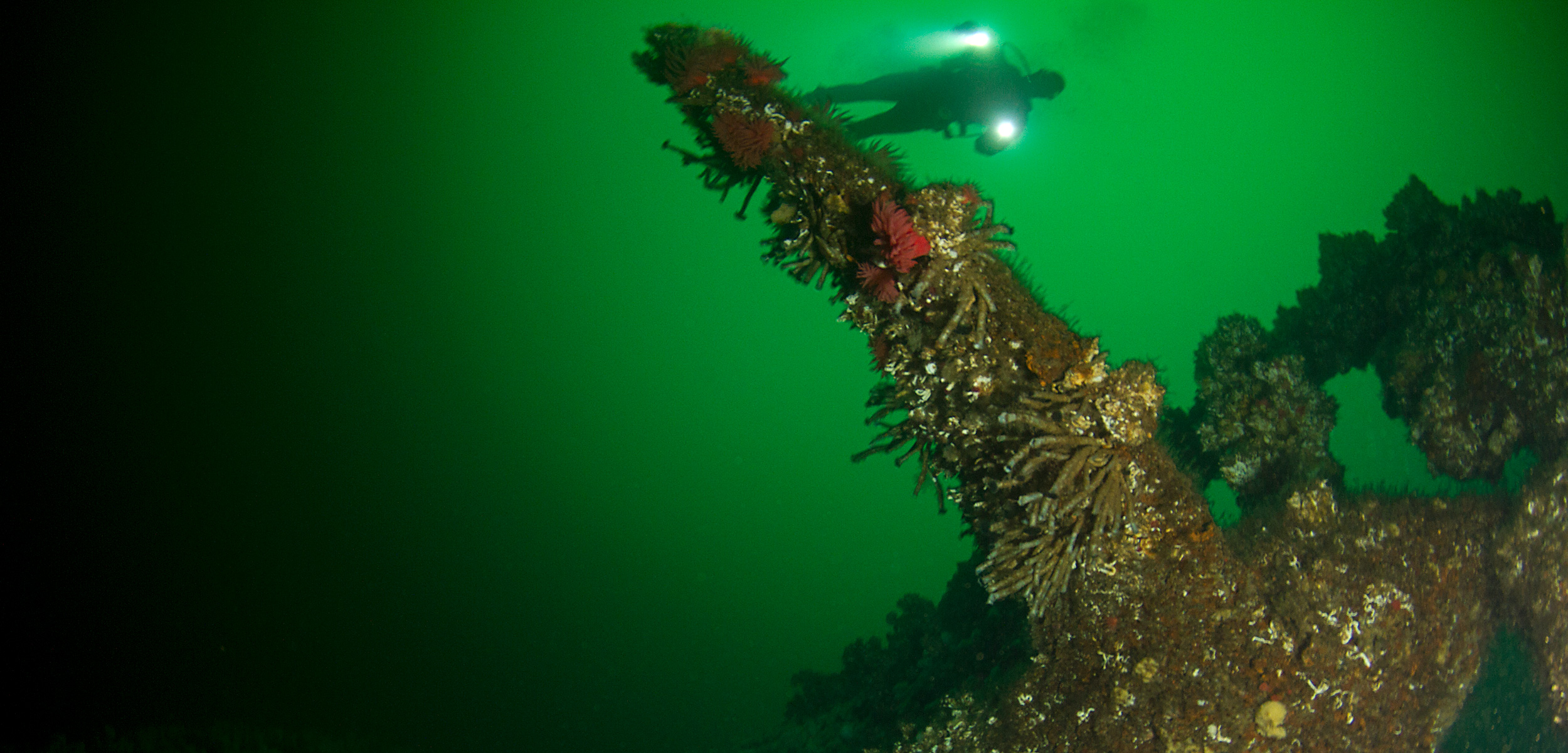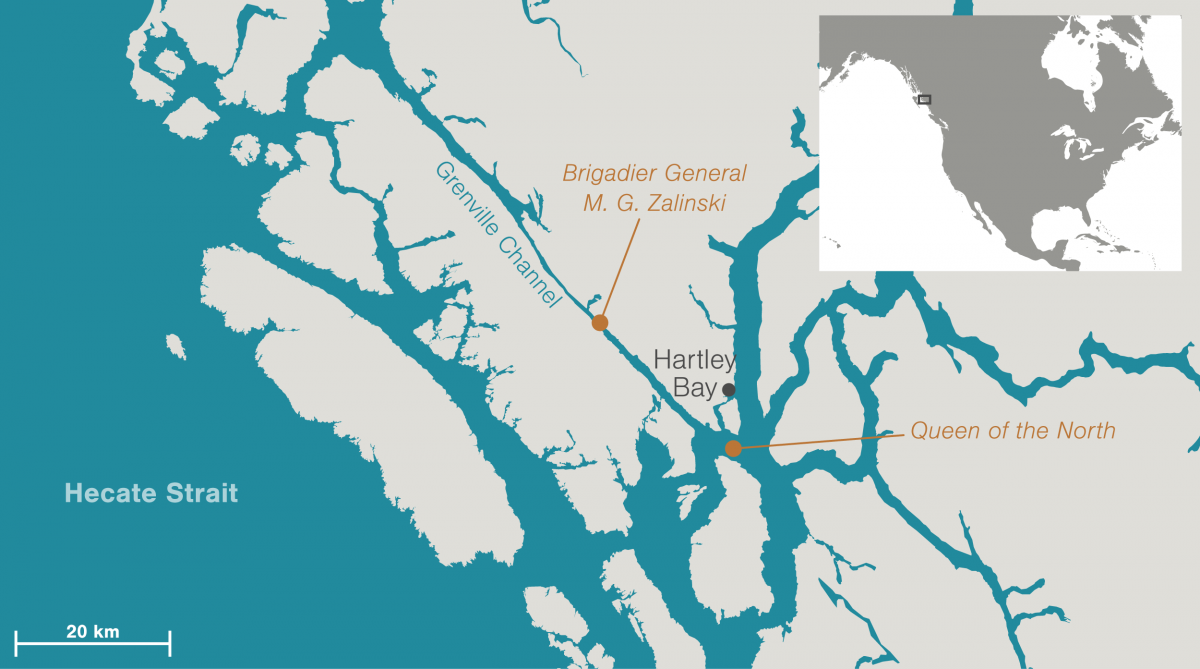The Tale of Dirty, Old, Leaky Zalinski
A Second World War-era shipwreck is a haunting reminder that you can never fully clean up an oil spill.
Article body copy
An officer aboard the United States Army transport ship Brigadier General M. G. Zalinski described an autumn rainstorm on British Columbia’s north coast as a fluid wall “so heavy that one could not distinguish rain drops falling.” Even the steel bow of the 76.5-meter ship disappeared from his view.
The ship was on a routine mission in 1946 to deliver military and general cargo from Seattle, Washington, to Whittier, Alaska, a 2,500-kilometer voyage north. The crew navigated without radar, an important, but nascent, technology in the Second World War. Instead, they used echoes from the ship’s whistle to indicate proximity to shore in tight passages.
The ship found safe anchorage in British Columbia’s Inside Passage—but not for long. The impatient Captain Joseph Zardis ordered an early start and ignored the pilot’s warnings that narrow Grenville Channel lay ahead and that the rain dangerously muffled the echoes.
The ship proceeded into foreboding darkness.
Around 3:00 a.m. on September 29, the crew awoke to a strong jolt followed by a series of emergency blasts. The ship had run aground and sustained a 12-meter gash spanning two of its holds; it listed to starboard and began to sink.
“It’s a dark-stormy-night sea story,” says Roger Girouard, the Canadian Coast Guard’s assistant commissioner for the western region. This one turned out better than most. “Everybody got out, including the dog.”
All 48 crew members and an Irish setter made it safely into two lifeboats. A commercial fish packer rescued the men and dog a few hours later and transported them to the nearby Canadian Fishing Company cannery on Princess Royal Island, then to the port of Prince Rupert, about 100 kilometers north of the wreck site.
After momentary media attention the story petered out.
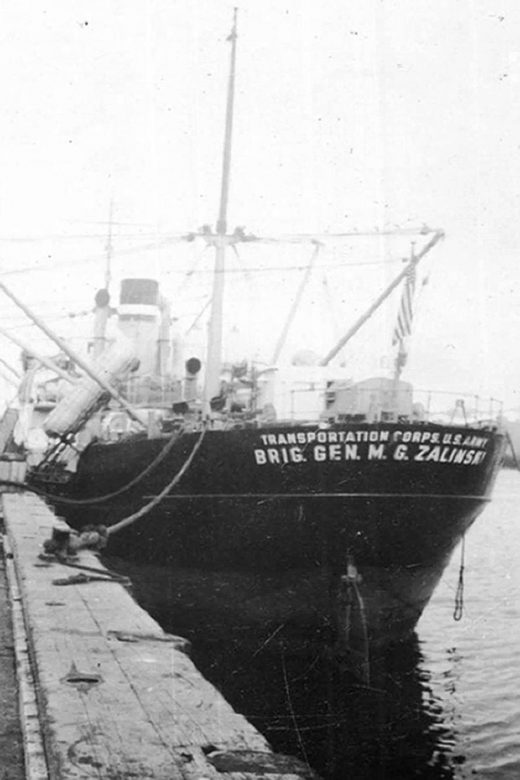
Built in 1919, the Brigadier General M. G. Zalinski transported cargo for the United States military until it sank one year after the end of the Second World War. Photo public domain
Built in 1919, the ship was thought to have sunk in waters hundreds of meters deep, when, in fact, it came to rest belly-up on a rocky shelf just 34 meters below the surface. No one mounted a salvage operation, despite the fact that contaminants filled the ship.
The Zalinski carried up to 700 tonnes of bunker C fuel oil, a common fuel for commercial marine engines that’s persistent and especially toxic to birdlife and shoreline ecosystems. The ship also carried more than 100 tonnes of other potential pollutants, including paint, gasoline, oil and lube, turpentine, and carbon tetrachloride, an industrial cleaning agent for dealing with oils and fats. Military cargo included 132 general purpose bombs weighing 225 to 900 kilograms apiece, 276 practice bombs, 32 boxes of bomb fuses, 20 cases of blasting caps, 26 boxes of hand grenades, 10 boxes of hand grenades-tear gas, and 473 boxes of small arms ammunition.
Given the size of the gash in the hull and the load of ammunitions and potentially toxic fluids on board, there must have been environmental consequences to the accident, but it was a different era. One year after the Second World War ended, the global public had seen too many vessels and soldiers disappear into the ocean to care about the Zalinski, an unremarkable ship on a remote stretch of BC coastline. At the time, oil on the shoreline was no big deal. “People were just used to it,” Girouard says. “There wasn’t a lot of angst.”
So, for almost six decades, the Zalinski languished, forgotten and unseen in its subsea purgatory, one ship after another passing overhead and oblivious to what lay below.
Then, in 2003, the wounded giant stirred. One drop of oil after another bled from the wreck and rose to the surface to create thin rainbow sheens. Not enough to cause major environmental damage, but sufficient to catch the eye of the Gitga’at First Nation from Hartley Bay, 40 kilometers to the southeast. The community wasn’t letting anyone walk away from the Zalinski.
The Zalinski was passing through Grenville Channel in British Columbia when it sank just three kilometers northwest of this stretch of water. Video by Keith Holmes
The coast guard deployed a remotely operated vehicle (ROV) to find the wreck—later confirmed by the US military to be the Zalinski—and sent commercial divers to patch the ship’s corroded rivets. The Canadian federal government issued a warning to mariners to avoid anchoring or fishing within 200 meters of the wreck. The bleeding, however, continued, and fears only grew at the prospect of an ever-weakening Zalinski suddenly spilling enough oil to cause a marine catastrophe.
A full decade after the first signs of trouble, the federal government responded in a big way, dedicating up to CAN $50-million in 2013 to remove the oil and avert disaster, working in fits and starts over five years. Yet some risk of environmental damage persists. Perhaps the biggest legacy of the ship is a warning of the environmental dangers of modern coastal shipping and the challenges of responding to even the smallest oil spill.
Coastal communities are understandably leery of oil industry activities on their shorelines. The more rugged the landscape and productive the waters, the more communities feel apprehension. The stretch of water along the jagged coastline near Hartley Bay is one that even the most seasoned sailors have to pay close attention to.
On nearly the same stretch of coastline—almost 60 years after the sinking of the Zalinski—history repeated itself on March 22, 2006. BC Ferries’ 125-meter passenger and vehicle vessel Queen of the North was on a scheduled run from Prince Rupert to Port Hardy, at the northern end of Vancouver Island. The vessel carried 59 passengers and 42 crew members, along with 225,000 liters of diesel fuel, 15,000 liters of light oil, 3,200 liters of hydraulic fluid, and 3,200 liters of stern tube oil.
The ferry motored past the Zalinski wreck in darkness, then, just south of Grenville Channel, struck Gil Island and sank in less than 90 minutes, killing two people. Survivors boarded lifeboats and awaited rescue by the Gitga’at, the coast guard, and private vessel owners who happened to be in the area.
The ferry sank in 430 meters of water and released a significant amount of lighter fuels, which officials believe dispersed and evaporated with minimal impact on wildlife. Subsequent hydrocarbon tests in the area conducted by the Gitga’at confirmed levels in the normal range.
Still, twice bitten by maritime disasters almost on their doorstep, the Gitga’at people are vigilant for further releases of oil and other pollutants and continue to undertake studies to monitor environmental impacts.
So, in 2010, when oil giant Enbridge Inc. proposed to build its Northern Gateway pipeline from Alberta to British Columbia’s north coast to deliver bitumen for export by ship, First Nations and the BC public protested.
Over the years, opposition to the Northern Gateway project grew. But the project turned out to be a catalyst for the government: they could practice dealing with an oil spill—so feared by project opponents—by cleaning up the Zalinski. The plan was for federal and provincial agencies and the Gitga’at and Gitxaala Nations, located north of Grenville Channel, to work cooperatively under a unified command system that might be deployed during a real spill.
The initial two-month cleanup operation in 2013 involved a command center in Prince Rupert; at least 32 vessels or barges, including coast guard vessels, response vessels, and tugboats; and three fishing lodges for accommodations. The coast guard hired Dutch-owned Mammoet Salvage Americas as the primary contractor and Global Diving & Salvage of Seattle as the main subcontractor.
An initial ROV inspection of the Zalinski revealed the bulkheads had wasted away and the oil had dispersed in pockets inside the hull. Rather than remove all the oil, priorities shifted to getting enough out to prevent a major pollution event. By drilling holes and inserting control valves, the cleanup crew successfully pumped 44 tonnes of bunker oil and 319 tonnes of oily water onto a surface barge for disposal at a facility about 800 kilometers south, near Vancouver.
“The key is that we got rid of the threat of a massive sudden spill,” says Girouard, who commanded the Zalinski operation. “We’re confident that was accomplished.”
But the operation was not over. Without public fanfare, the coast guard returned to the wreck site two more times, in 2015 and 2018, to remove almost another four tonnes of oil—with still more lurking inside.

Roger Girouard, the Canadian Coast Guard’s assistant commissioner for the western region. Photo courtesy of the Canadian Coast Guard
The coast guard got what it reasonably could but concedes that it may take years or even decades before the risk of oil continuing to rise to the surface is finally over. “The likelihood of anything big occurring is really quite small,” Girouard insists. “But if we have a situation down the road in 18 months or 18 years, then we’ll look at going back down. We’ll deal with it as it arises.”
What we can say is that the Zalinski—a small, stationary target in protected, shallow waters—highlights the federal government’s challenges in dealing with oil spills. More than 1,000 pages of access to information documents obtained by Hakai Magazine reveal that while the 2013 operation was deemed a valuable exercise, it also exposed a slew of government inadequacies.
Originally a fall home for the Gitga’at people, Hartley Bay became a permanent settlement in 1887. Even as the economy was changing with the influx of European industry, for decades the people lived independently of wage labor—they fished; harvested clams, mussels, seaweed, and berries; and hunted and trapped game. And while the end of the Second World War brought a whole new set of changes to First Nations—technological and social—the remoteness of Hartley Bay ensured the people could still live off the land. The sinking of the Zalinski threatened that existence.
Chris Picard, acting director of the Gitga’at oceans and lands department, explains that a story handed down through oral history suggests the Gitga’at once harvested shellfish from beaches near the Zalinski wreck in fall and winter. That stopped about 70 to 80 years ago, around the time of the sinking. “The story goes that elders of the day essentially forbade people from harvesting there because they knew something was up but didn’t know what.”
No one living today can directly recall the Zalinski accident 73 years ago or the environmental fallout from oil spilled at the time. The people today can only deal with the present and future environmental fallout, which the documents reveal is a minefield of potential problems.
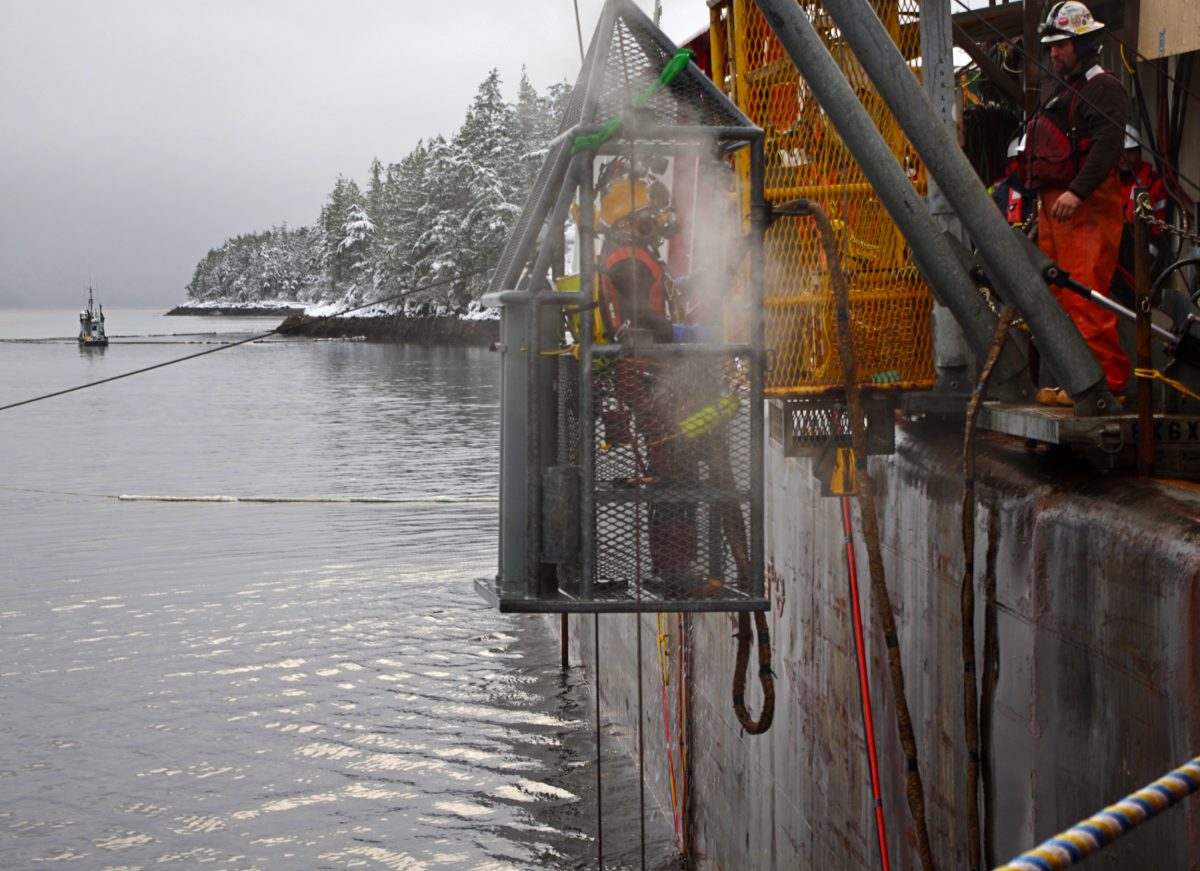
The Canadian federal government launched a cleanup operation in 2013, contracting divers to survey the Zalinski wreck and to extract some of the oil. Photo courtesy of the Canadian Coast Guard
For instance, a report for the federal government by the International Tanker Owners Pollution Federation—which provides technical support to the owners of tankers and other oil carriers and served as an on-site technical adviser for the Zalinski cleanup— found “significant weakness” in the lack of practical experience in salvage and oil spill response operations.
Using an orchestra analogy, the federation found that the cleanup lacked a “conductor to ensure that all of the different sections of musicians are coordinated and playing the same tune,” adding that a “knowledgeable oil spill response specialist and coordinator position” would have helped.
While First Nations brought local knowledge to the cleanup operation, the federation report observed, the Indigenous system of consensus governance impeded timely decision-making. The initial operation also proved inordinately expensive—costing the coast guard close to half of the $50-million set aside—with some of the activities deemed “primarily political or public relations” with no specifics provided.
Canada today applies a polluter-pay principle to oil spills, consistent with the international 2010 Hazardous and Noxious Substances Protocol. The United States, however, was not billed for costs of cleaning up the Zalinski due to the amount of time that had passed and the era in which the sinking occurred.
The federation report added that Canada should have undertaken a more thorough assessment of the quantity and composition of the oil and pollutants left within the vessel, including a survey of the wreck’s structural integrity. Mammoet agreed in the documents that the ship was in worse shape than originally thought, noting the internal structure had largely wasted away, which complicated the oil removal.
Despite all the money spent and work undertaken, the Zalinski cleanup fell far short of the sort of response that would have increased public confidence in the government’s ability to respond to an oil spill.
The federation report confirmed that the cleanup lacked the “pressures and challenges of an emergency spill scenario” and noted that training occurred during the cleanup, a luxury that a real spill would not afford.
“It doesn’t represent an oil spill tanker scenario,” Girouard agrees. “It’s a salvage operation, let’s be very clear, with an oil risk factor.” Flowing from the experience, he adds, the coast guard now conducts a “big exercise every couple of years,” and, given the potential for mass casualties, is planning a cruise ship drill in Port Hardy in September.
A separate report for the federal government by LOC Marine and Engineering Consultants, also hired to work on the Zalinski, provided a more charitable account of the cleanup. It generally praised efforts, saying the unified command system worked well, while Girouard’s command remained “superb in every respect.”
The report, also released through an access to information request, went on to suggest that logistically it would have made more sense to locate the command center closer to the wreck rather than in Prince Rupert and agreed with the federation report that a proper pre-survey and assessment of the state of the ship would have helped.
During the three cleanup operations, divers struggled with strong tidal currents with inconsistent surges and the corrosion of the wreck. In 2018, one diver lost consciousness and was brought to the surface and put in a hyperbaric chamber. He regained consciousness and was transported by helicopter for treatment. A worksite investigation noted that hauling the diver to the surface like that could have put him at risk of a ruptured lung.
The Zalinski cleanup experience hints not at an isolated incident borne of a rogue captain long forgotten, but at a major global problem that is just now surfacing.
Downed ships full of oil riddle ocean floors. A 2017 report, also by the International Tanker Owners Pollution Federation, noted there are an estimated more than three million shipwrecks scattered on the ocean floor around the world and that 8,000 to 9,000 pose a risk due to millions of tonnes of oil still on board.
Canada has no list of underwater wrecks—despite the fact that the west coast of Vancouver Island, just south of the Zalinski wreck site, is known as the graveyard of the Pacific. The federal government is, however, preparing an inventory of “vessels of concern.”
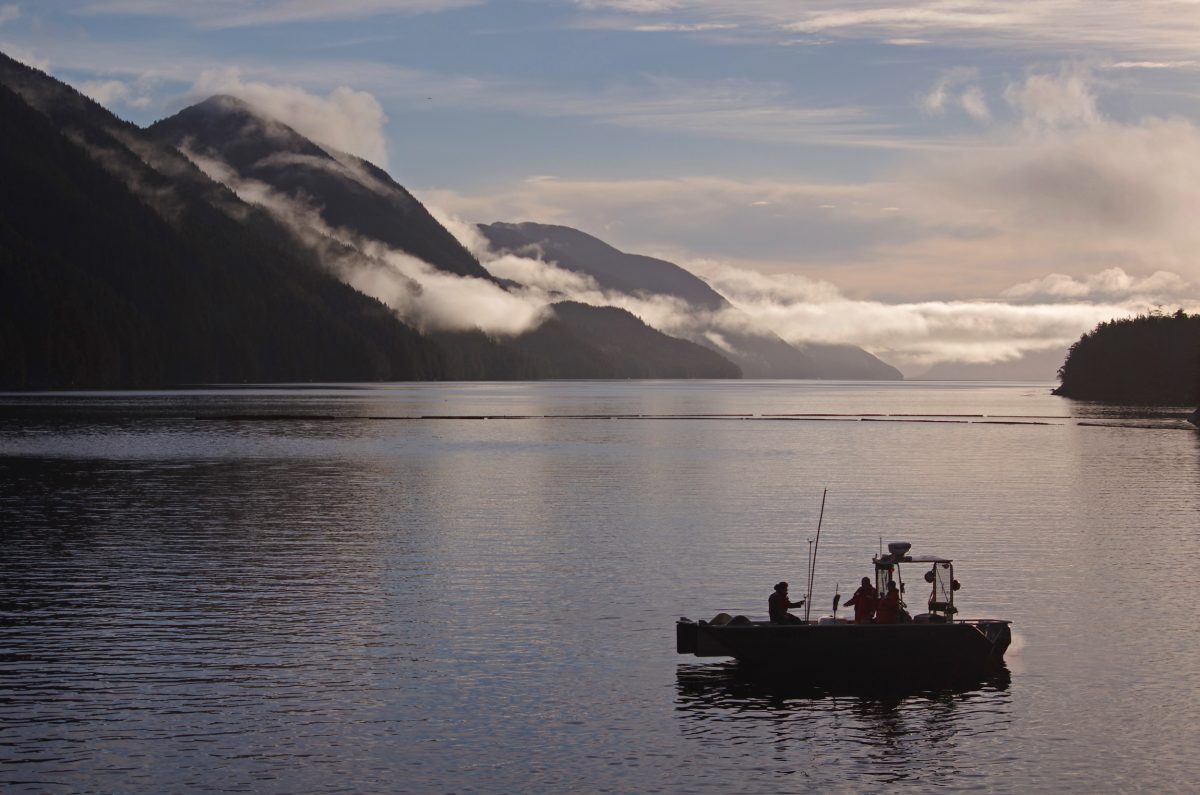
An estimated 10 to 15 percent of oil can be recovered following a spill in open water. Photo courtesy of the Canadian Coast Guard
The good news is that salvage technology and equipment continue to improve, but, as the Zalinski demonstrates, they come at a high cost and not a whole lot of oil is actually removed from the environment. Transport Canada expects that a cleanup operation can only recover 10 to 15 percent of a marine oil spill.
Furthermore, oil spill response knowledge is being lost simply because shipping spills happen less often today, reports Mark Whittington, a technical team manager with the federation. “Canada’s been really lucky. It hasn’t had a big spill in a long time. It’s the same in the United Kingdom, Europe, and most of the world. The heyday of the big spills was in the 1970s, and this just isn’t happening.”
It’s been 30 years since the Exxon Valdez supertanker ran aground and spilled around 35,000 tonnes of crude oil into Alaska’s Prince William Sound. Despite an estimated cleanup cost of US $2.8-billion, the environmental effects persist—pockets of oil remain, and a transient killer whale population, herring, and some seabird populations have never recovered. The largest oil spill in Canada occurred in 1970, when the tanker Arrow spilled more than 10,000 tonnes of oil off Nova Scotia. (In 2015, the Arrow wreck began to leak its remaining oil, prompting the government to remove 20,000 liters.)
Sunken oil is not the only problem posed by military ships like the Zalinski. A study published in the journal Frontiers in Marine Science also raises concerns over organic explosive compounds as well as a variety of metals from old munitions leaking into the marine environment.
In the Zalinski’s case, the government decided to leave the munitions alone following a Canadian Armed Forces assessment. “Don’t touch, don’t move, and they won’t bite you—that’s the guidance,” Girouard says.
On a clear day in Hartley Bay, a couple of drones flit over the shoreline, buzzing and whirring as they capture baseline data the Gitga’at need for beach restoration efforts. Community members joined a two-person team from the Hakai Institute* to map two shellfish beaches near the Zalinski wreck. The coast guard ordered toxicity tests after the 2013 cleanup operation and found no significant issues, but the community is taking no chances—they want a future with the kind of healthy, productive shellfish beds they had in the past.
Mapping is also planned for two beaches near the Queen of the North sinking. Vigilance is one tool the Gitga’at have at their disposal. So is public pressure.
On British Columbia’s north coast, Enbridge never did build its pipeline. Prime Minister Justin Trudeau responded to public sentiment in 2018 and approved a moratorium on tankers carrying more than 12,500 tonnes of oil between northern Vancouver Island and the Alaska border. The measure, however, does nothing to stop smaller ships from fouling coastal waters. For instance, the 29-meter Nathan E. Stewart tug and tank barge grounded and sank in October 2016, spilling an estimated 110,000 liters of diesel oil just west of Bella Bella on the central BC coast in Heiltsuk Nation territory. In July 2019, a Canadian court fined the barge owner/operators, Texas-based Kirby Offshore Marine, almost CAN $3-million—most of that expected to benefit fish conservation on the central coast—after the company pleading guilty to violations of the Fisheries Act, Migratory Birds Convention Act, and Pilotage Act.
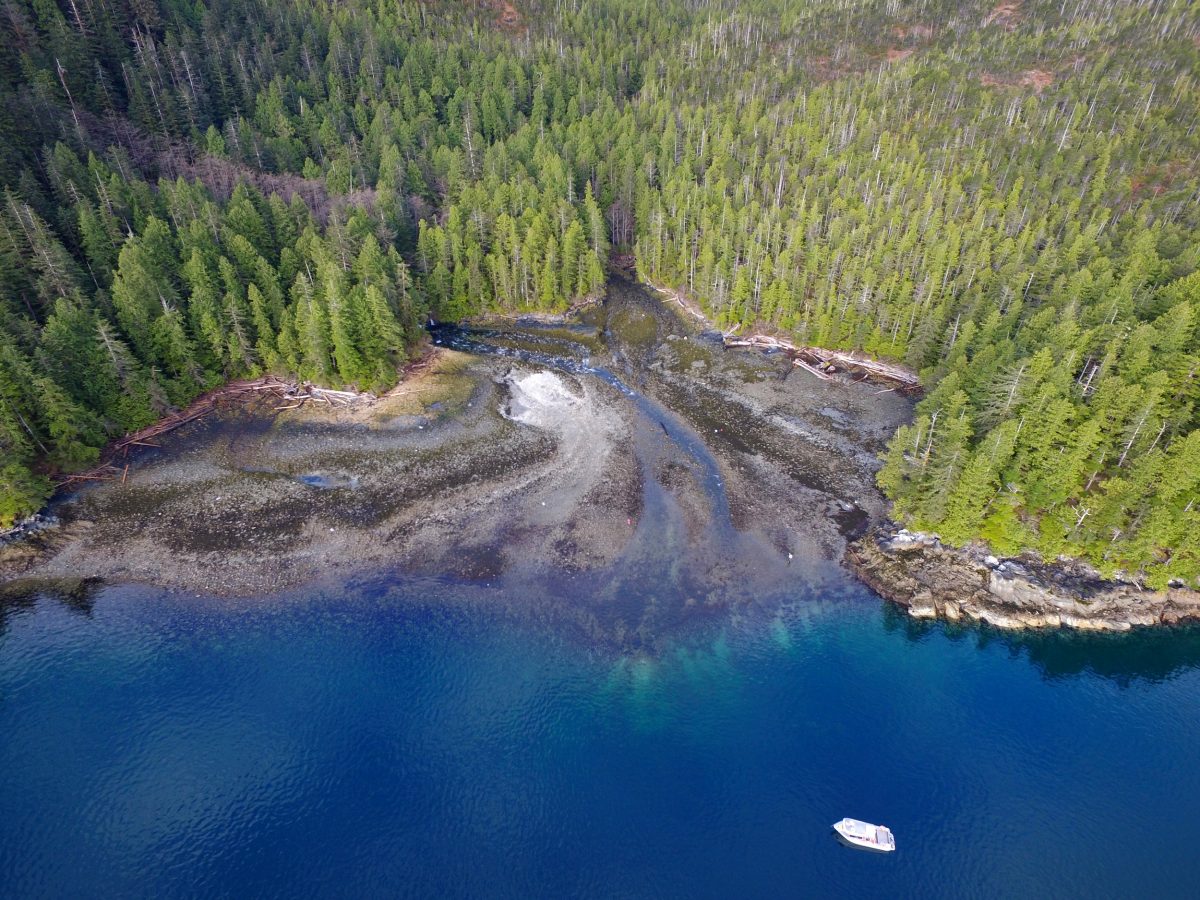
The Gitga’at people are mapping their coastal ecosystem close to the Zalinski wreck. Oil contamination from the ship could pose a threat to the shellfish they’ve historically harvested. Photo by Keith Holmes
On the south coast, however, the federal government is the proponent of the Trans Mountain Pipeline expansion from Alberta to Burnaby in Metro Vancouver. If completed, the project will increase oil tanker traffic sevenfold in the Vancouver harbor and the Salish Sea—the shared waters of British Columbia and Washington State, critical seasonal habitat for the endangered population of southern resident killer whales.
Girouard believes that global economics will assure the continued shipping of oil for the foreseeable future. He puts faith in modern-day safety initiatives—double-hulled tankers, tug escorts, high-tech navigational aids—to significantly reduce, but not eliminate, the chance of a major spill. “I can never say never. But the first principle is, let’s keep them off the rocks in the first place,” he says.
The Zalinski’s enduring message is that coastal shipping of oil is fraught with unexpected risks and challenges that can extend for generations.
Ultimately, only nature can achieve what humanity and its best resources could not, eliminating all traces of the wreck and its cargo. “The hull will continue to rust and deteriorate and break apart, just like Titanic is turning into dust at the bottom of the ocean,” Girouard says. “That will eventually happen to Zalinski.”
*The Hakai Institute and Hakai Magazine are both part of the Tula Foundation. The magazine is editorially independent of the institute and foundation.

